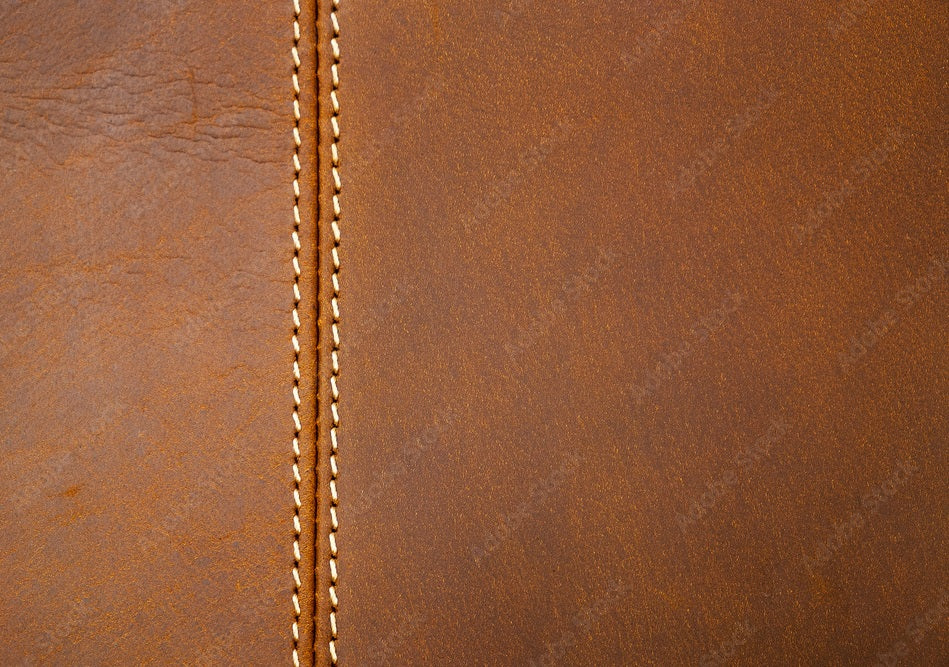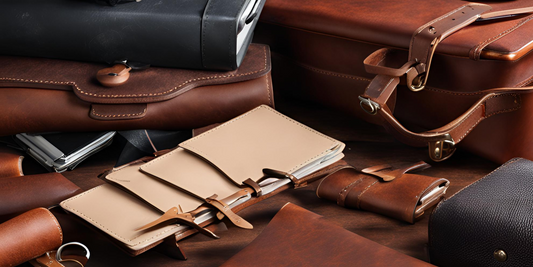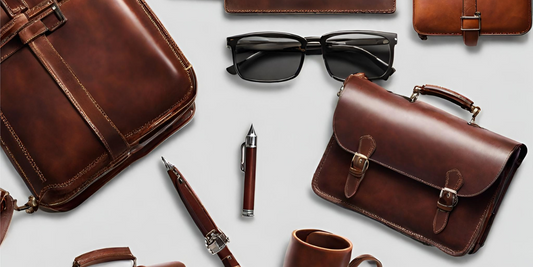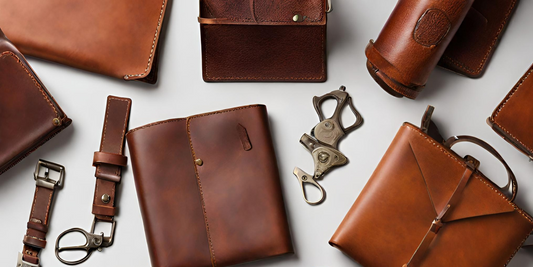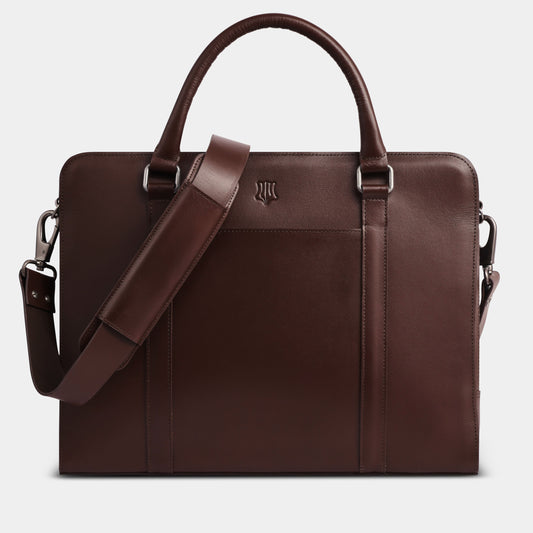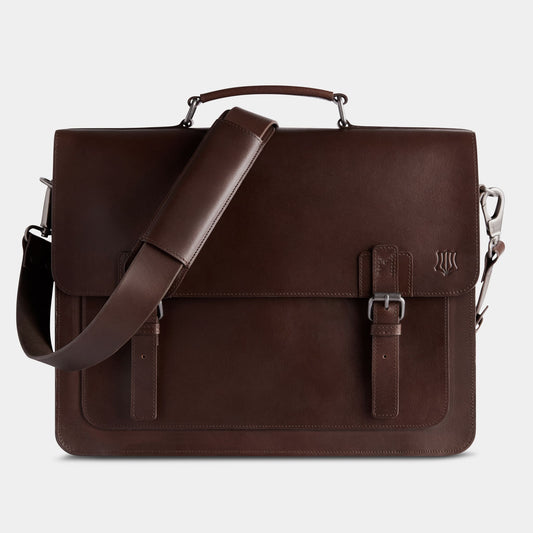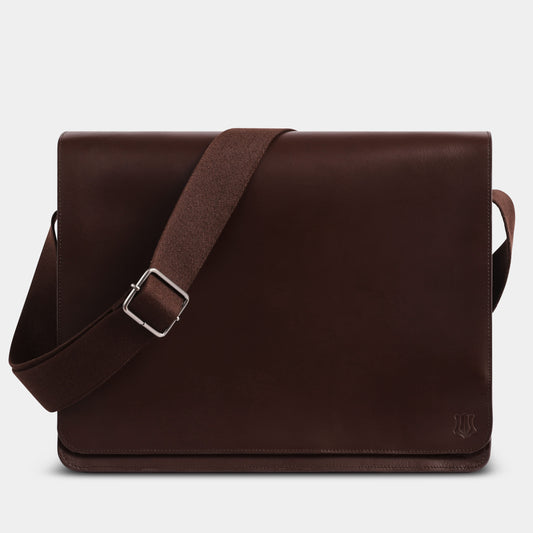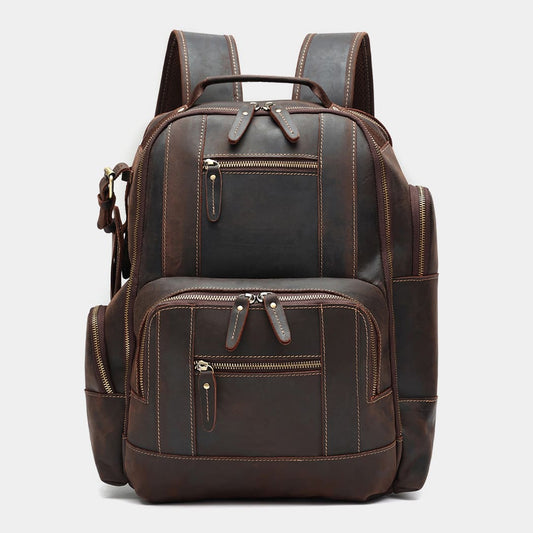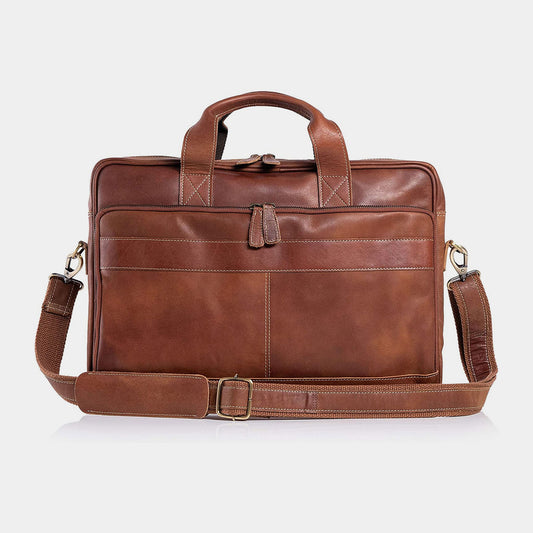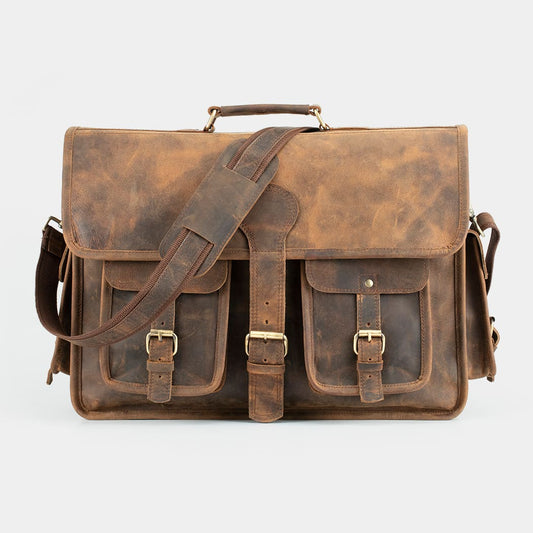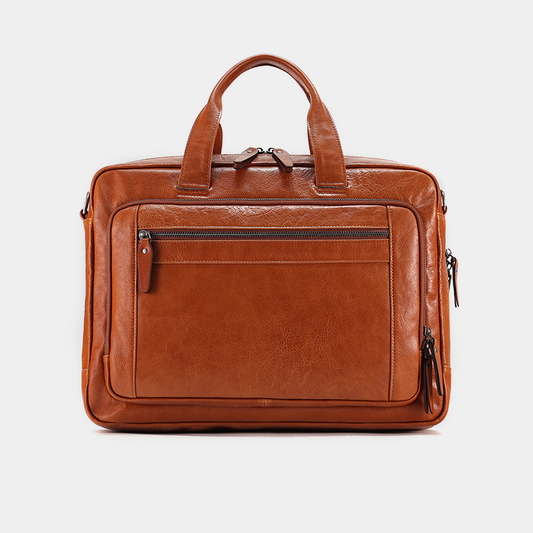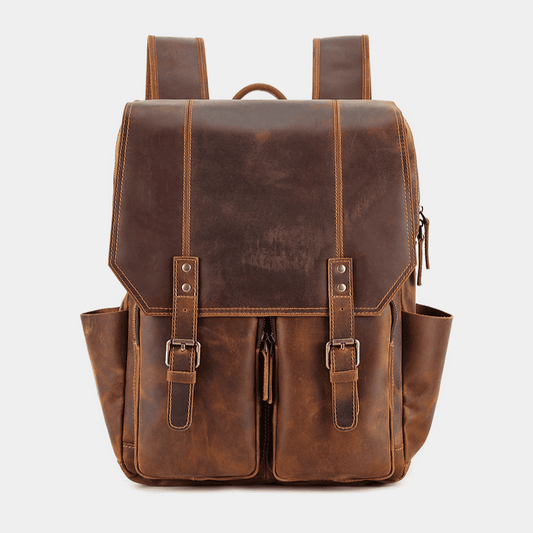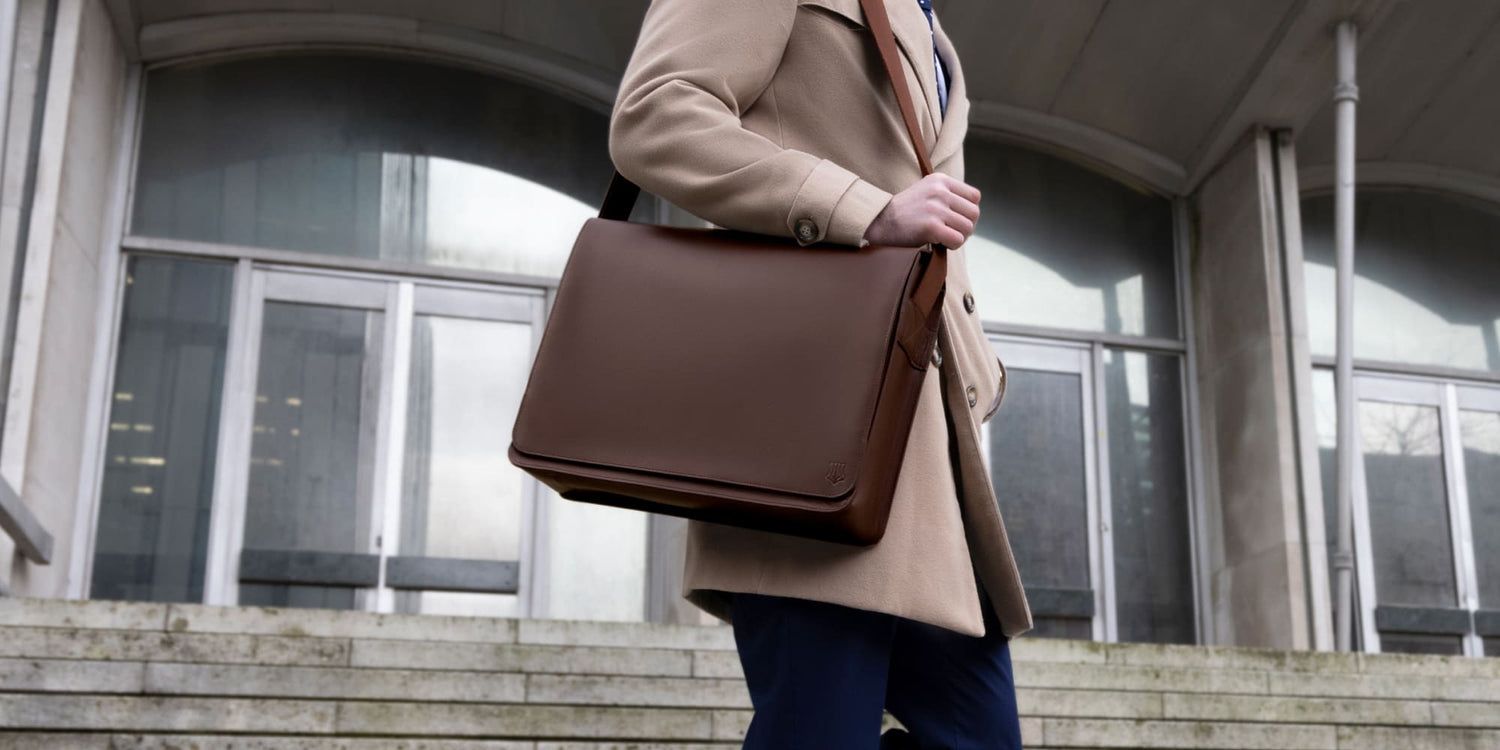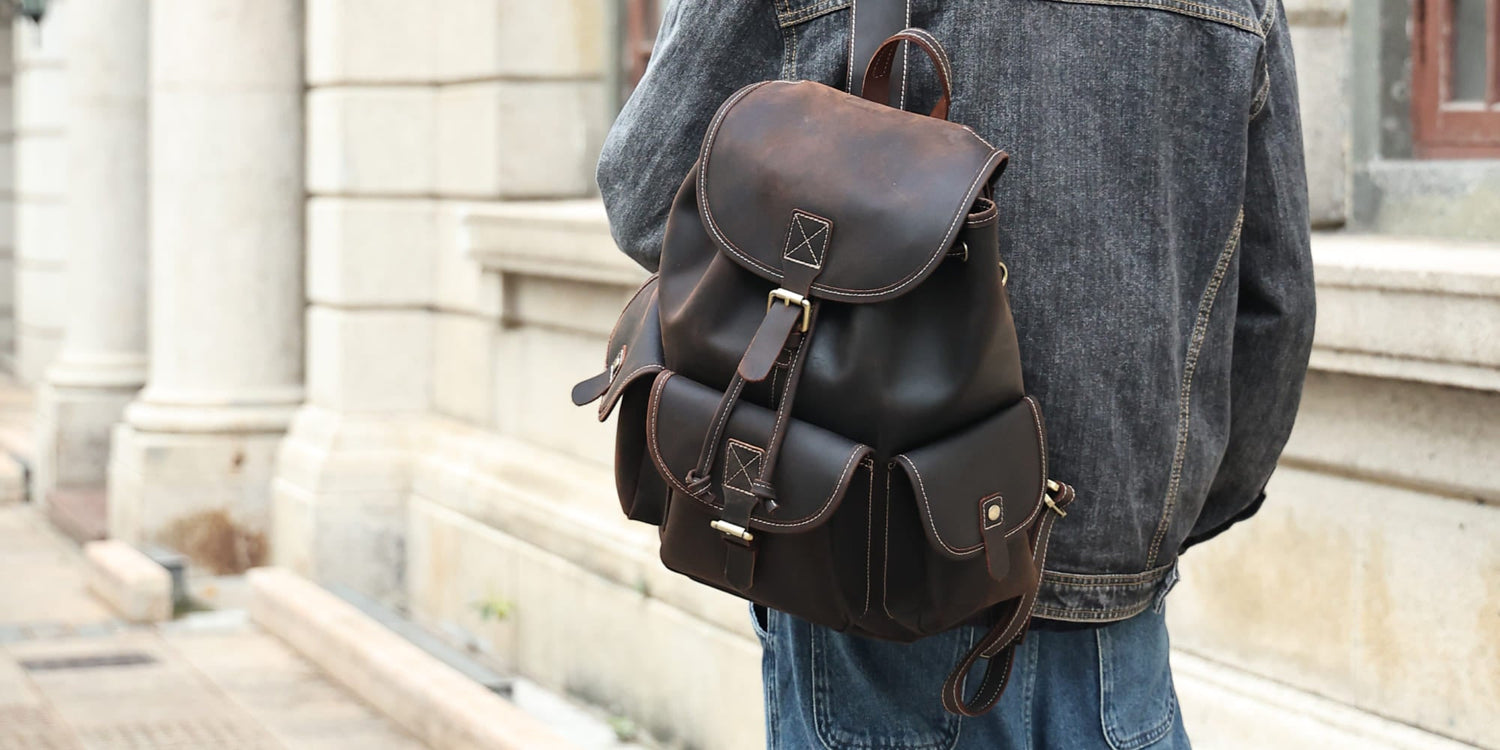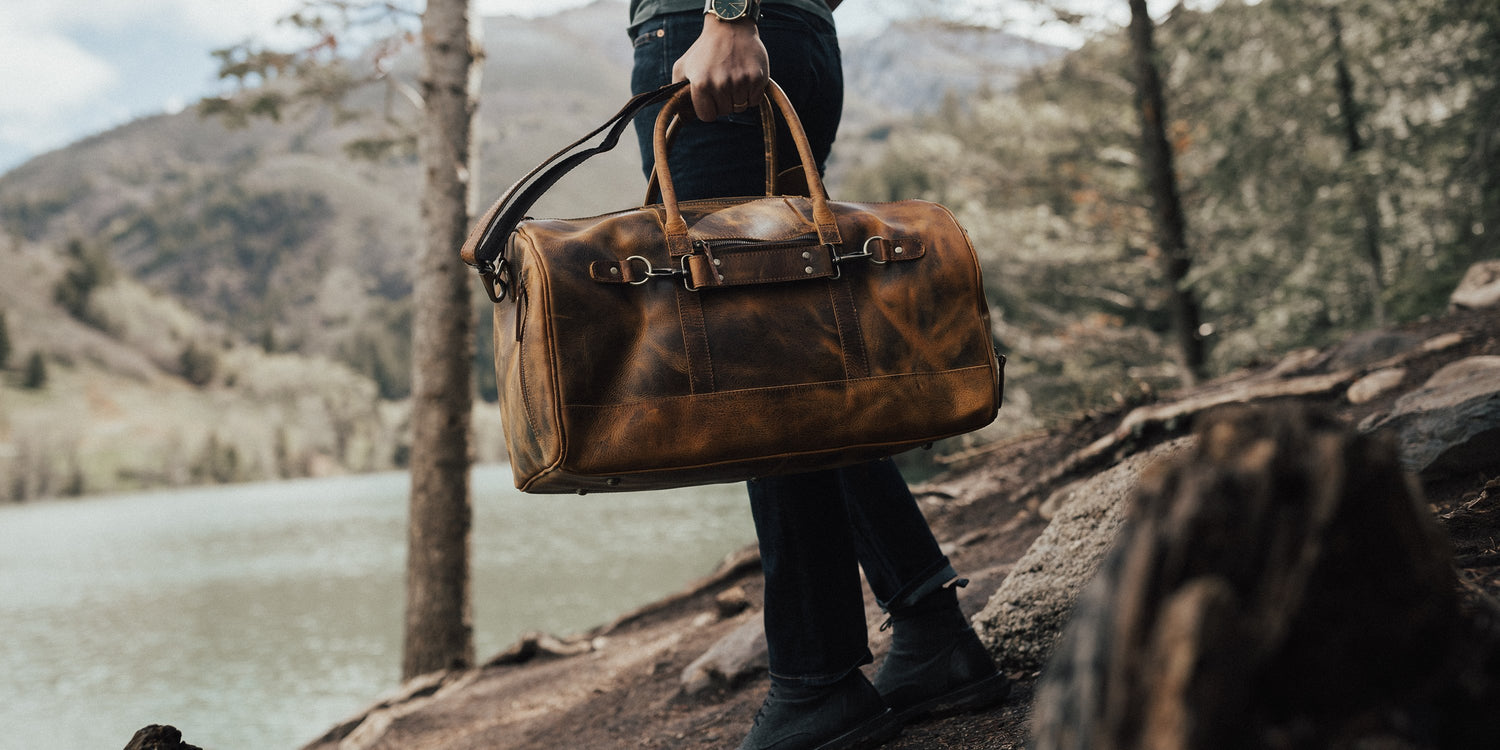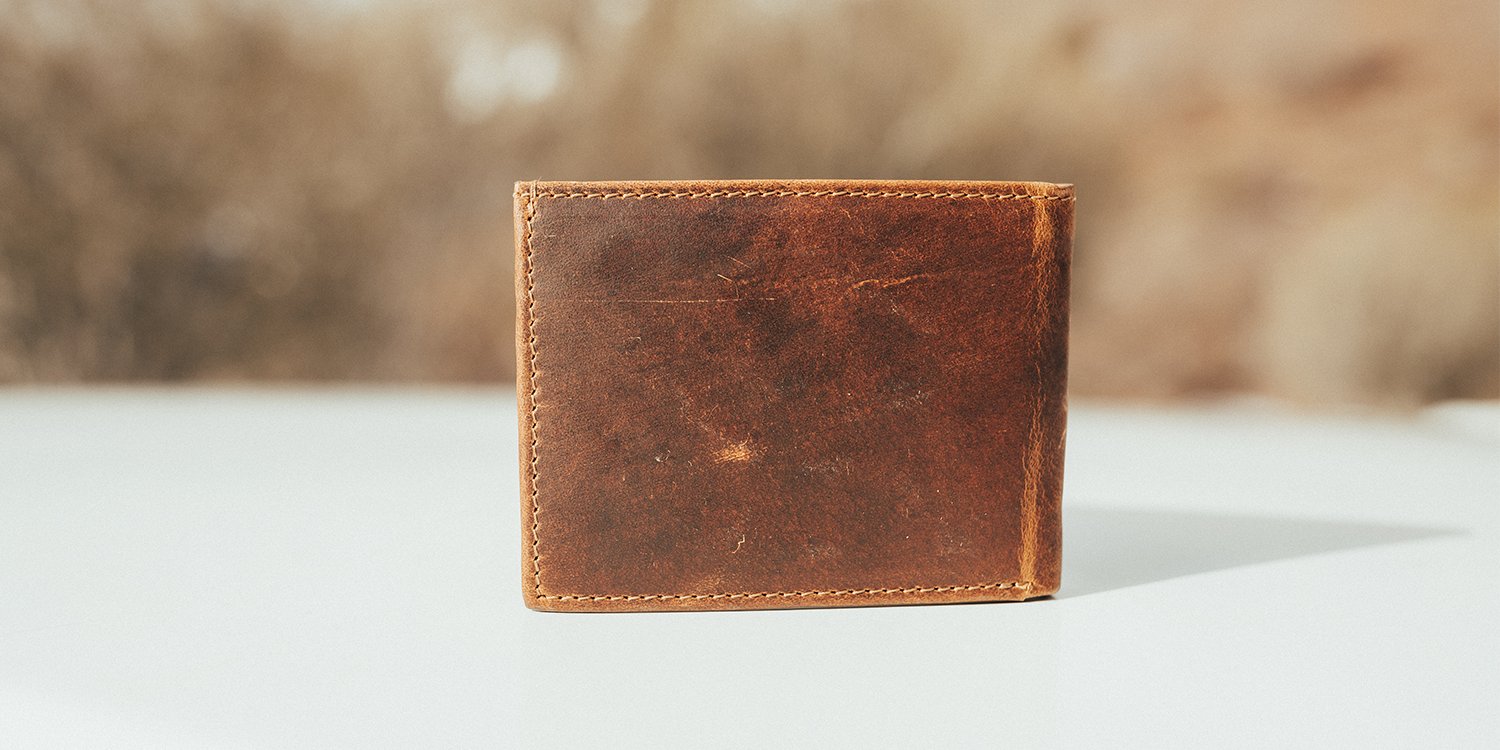Dive into the world of nubuck leather – a material often overlooked but deserving of closer inspection.
While it boasts a velvety texture and stylish appearance, nubuck comes with its fair share of drawbacks that may leave you questioning its superiority over traditional leathers.
Join us as we uncover the pros and cons of nubuck and decide for yourself if it's truly worth the hype.
What is Nubuck Leather?
Nubuck leather is a smooth leather made from the top grain of an animal hide.
It is a tough leather, often used for luxury lifestyle products like leather bags or shoes.
To the touch and upon initial inspection, nubuck leather feels and seems quite similar to suede.
In reality, nubuck leather is much more resilient and strong than suede or faux/vegan leathers.
It is a material that is very often compared to suede due to its fibrous texture.
Those investing in leather products are often directly comparing the two materials to decide which is the best option for their newest leather piece.
In terms of quality and durability, nubuck leather is superior.

Nubuck Leather vs. Other Leathers
Nubuck leather is slightly different to most other “traditional” leathers in its texture.
It is sanded to the result of a raised-fiber finish, which is why it is most commonly compared to suede rather than any other material.
Other leathers do not typically have such a smooth, fibrous finish.
For high-quality leather goods, we often recommend full grain leather and top grain leather.
These are luxury, premium leather materials and make beautifully classic leather products.
We recommend these materials due to their durability and finish.
Whilst nubuck leather is itself resilient, it will not hold up as well to substantial water damage and scratching as some others.
Full grain leather will be able to absorb some moisture for its own rehydration without substantial damage or misshaping.
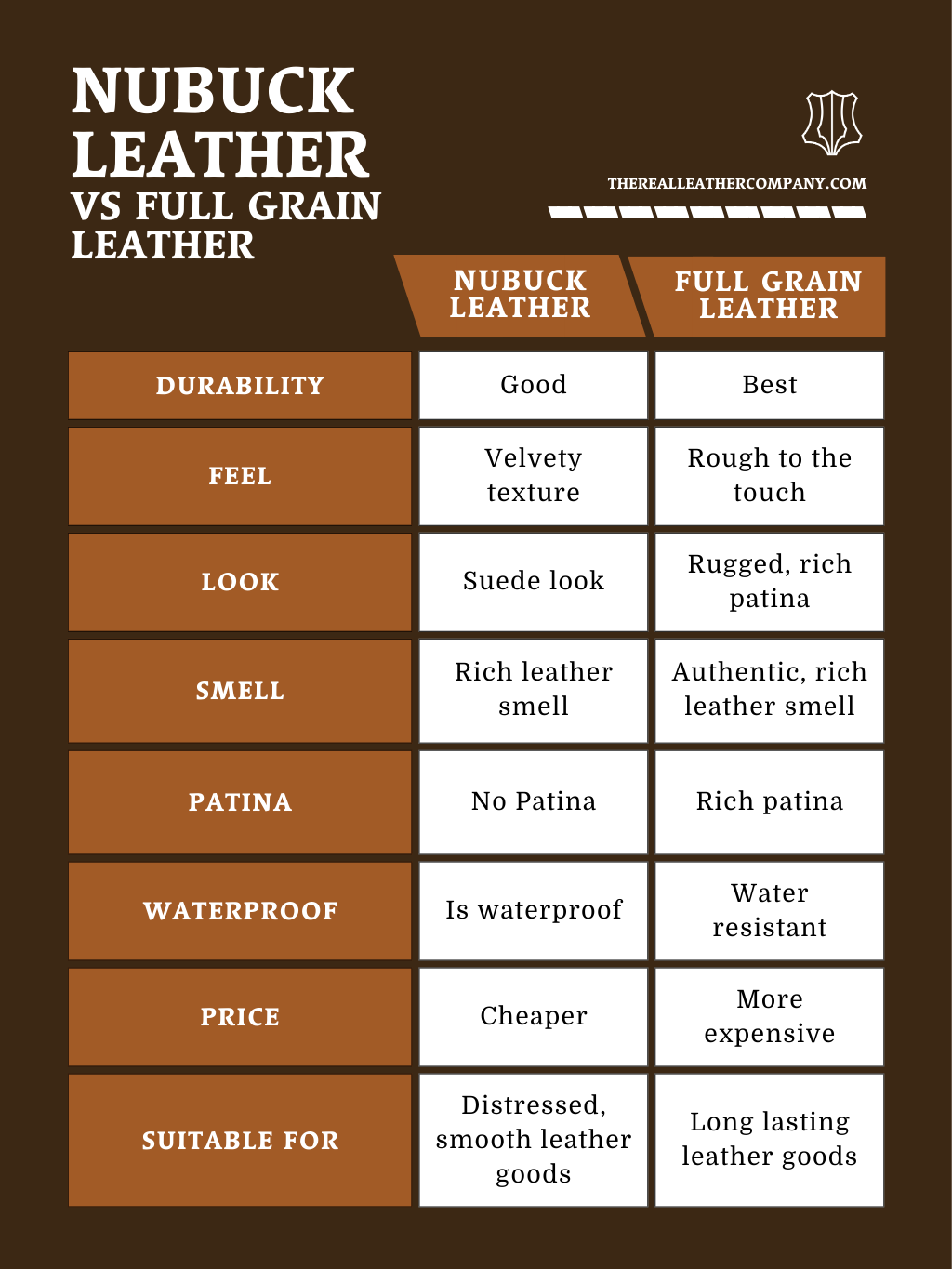
Nubuck Leather vs. Suede Leather
Suede is quite similar to nubuck leather in that they’ve both been sanded to a finish.
This process is what gives both nubuck leather and suede their signature looks and feel.
The main difference is that suede will come from the inner layer of the hide while the nubuck will come from the outer (top-grain) layer.
This makes nubuck more durable than suede.
But, in many ways nubuck and suede are very similar.
They are both used for fashionable products like leather bags, belts, upholstery and wallets.
Both suede and nubuck leather can be vulnerable to water damage.
There are options to treat the leathers for additional protection but owners of these leathers should still be cautious of staining and damage.
Typically nubuck leather is more expensive than suede, and this value is reflected in the look and feel of the material in the leather goods it produces.
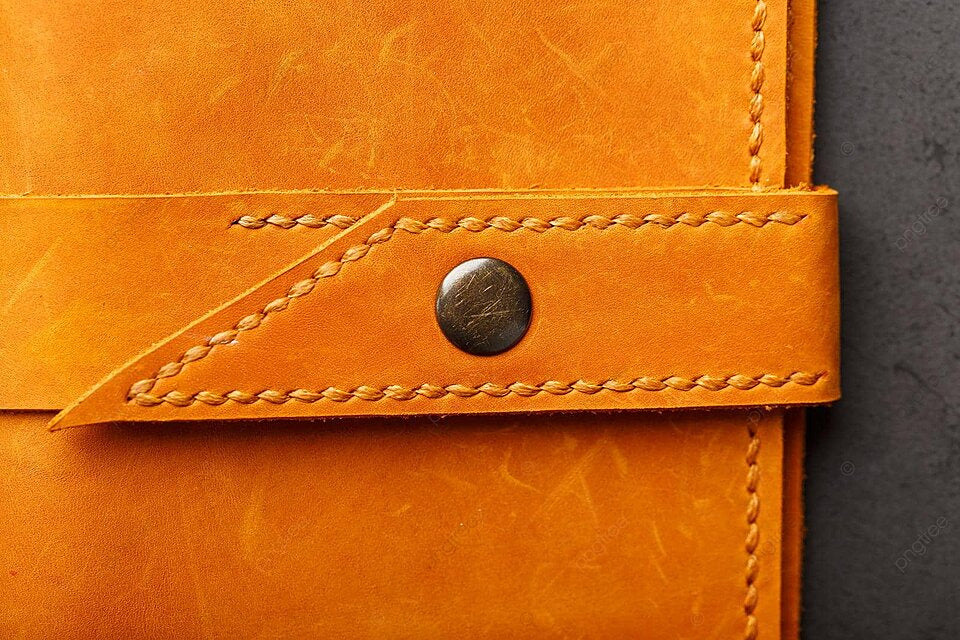
How is Nubuck Leather Made?
In quite the same way as top grain leather, nubuck leather is created from the very top layer of the hide.
Nubuck leather is made from the outer side of the calfskin or cowhide and is carefully sanded down to give it a smoother, more polished finish.
The sanding process exposes the fibrous layers, and this is what gives nubuck leather its soft and smooth texture.
These top grain materials can often be subject to damage or marking because of their origin.
In an attempt to cover these blemishes, leathers from the top grain are often tanned and then dyed.
For aesthetic appeal, a pattern might also be embossed into the nubuck surface.
Common patterns mirror natural leather patterns and will often enhance the natural color of the exposed fibers.

Nubuck Leather: The Pros and Cons
We’ve already spoken about the durability of nubuck leather but in reality, it has much more to offer than toughness alone.
This popular, luxury material makes excellent leather products and offers much in terms of its appealing properties.
Advantages of Nubuck Leather
1. Longevity
Of course, for many, the resilience and toughness of this material is a great feature in a high-quality product.
Particularly for products like bags and shoes, you’re looking for products that will stand the test of time, and a nubuck leather bag will absolutely do that.
The fact that it is made from the top grain gives it much of its strength and breathability but the tanning process and good, careful maintenance of a nubuck leather product will also contribute to its longevity.
2. Natural Look
Nubuck leather also has a very natural appearance whilst avoiding some of the defects that thicker leathers can have.
Nubuck often keeps its original color as the outer layer of the hide remains.
Having been sanded and treated, nubuck leather has a classic smooth appearance that appeals to many.
3. Comfort
Typically, nubuck leather is more breathable than other similar leathers.
This makes it comfortable to wear and therefore a popular choice for a variety of different leather goods.
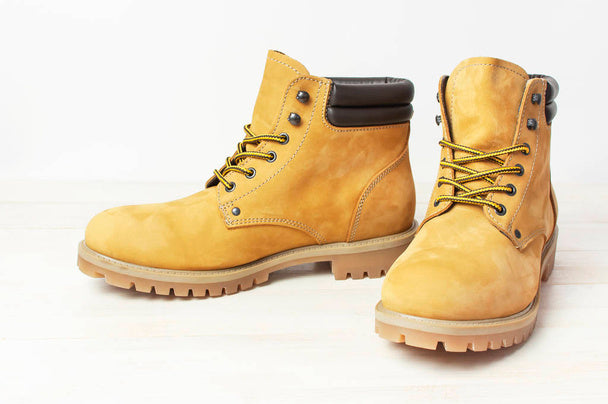
Disadvantages of Nubuck Leather
1. Price
Whilst it is by no means the most expensive type of leather on the market, it is slightly more expensive than its closest comparison, suede.
This is mostly down to its superior quality thanks to its tight-knit protein fibers.
Aesthetically, nubuck leather also has more of a classic appeal which adds value.
2. Staining
Nubuck, unlike some other leathers, can be prone to staining and soiling.
Untreated nubuck leather shoes, for example, when exposed to oils can be stained.
Typically nubuck leather will get darker when it’s wet, so caution should be taken because when it dries, it will return to its usual color, whilst leaving any stains behind.
3. No Patina
As the top side of the leather is sanded and buffed away, no patina will form on nubuck leather goods.
For some customers, this will be a turn off as a good patina allows a leather good to age gracefully.
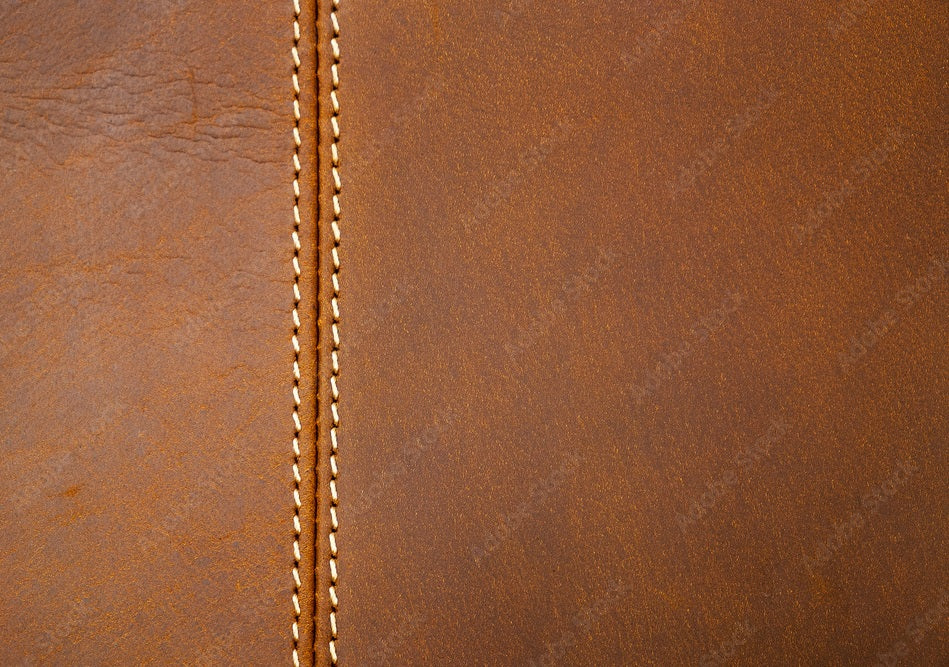
Nubuck Leather Care
Nubuck leather is prized for its luxurious feel and velvety surface, but caring for it requires special attention and care products to maintain its beauty and longevity.
Follow these simple steps to keep your nubuck leather items looking their best:
1. Regular Brushing
Use a soft-bristle brush or nubuck cleaning cloth to gently remove dirt, grime and dust from the surface of the leather.
Brush in small, circular motions to lift away any debris without damaging the delicate nap.
2. Stain Removal
For minor stains or spills, blot the affected area immediately with a clean, dry cloth to absorb as much liquid as possible.
Avoid rubbing the stain, as this can spread it further.
If the stain persists, use a nubuck cleaning eraser or nubuck cleaner specifically designed for nubuck leather to gently lift away the stain.
3. Protection from Moisture
Nubuck leather is more susceptible to water damage and staining compared to other leather types, so it's essential to protect it from moisture.
Consider applying a waterproofing spray or nubuck protector to create a barrier against water and stains.
Be sure to test any waterproofing products on a small, inconspicuous area of the leather first to ensure compatibility.
Once waterproofing is complete, you can use a damp cloth to wipe away any marks or contaminants.
4. Avoid Sunlight and Heat
Direct sunlight and excessive heat can cause nubuck leather to fade and dry out over time.
Store nubuck leather items away from windows and heat sources, and avoid leaving them in hot cars or near heaters.
5. Storage
When not in use, store nubuck leather items in a cool, dry place away from direct sunlight and moisture.
Use a breathable storage bag or cloth to protect the leather from dust and scratches.
6. Professional Cleaning
For stubborn stains or deep cleaning, consider taking your nubuck leather items to a professional leather cleaner.
They will have the expertise and specialized equipment to safely clean and restore your nubuck leather without causing damage.
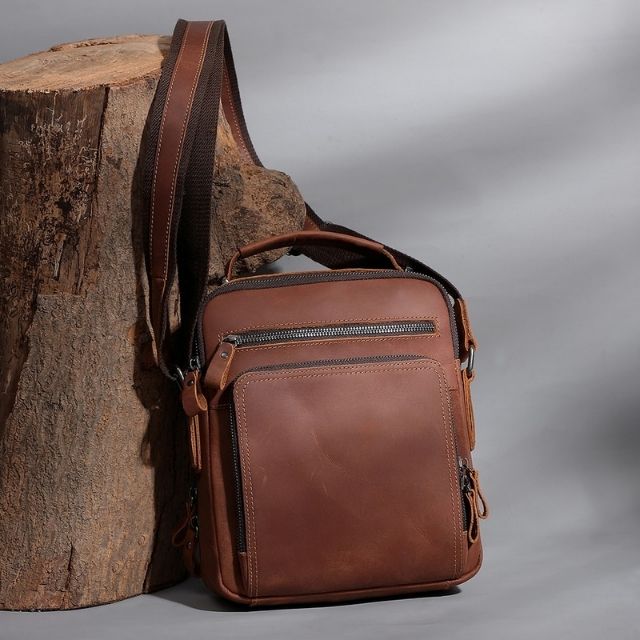
Environmental Impact of Nubuck Leather
Production Processes
Nubuck leather is typically made from the top grain of the hide, which undergoes extensive sanding or buffing to create its distinctive velvety texture.
The process of turning natural leather into nubuck consumes additional resources and energy compared to the production of smoother leathers like full grain leather.
This potentially increases its environmental footprint.
Chemical Usage
The production of nubuck leather may involve the use of chemicals for tanning, dyeing, and finishing processes.
While efforts have been made to develop more eco-friendly alternatives, some nubuck leather manufacturers still rely on synthetic chemicals that can pose environmental risks if not managed properly.
Water Consumption
Leather production, including nubuck leather, requires water usage for various stages of processing, such as soaking, washing, and dyeing.
Water consumption can strain local water sources and contribute to environmental degradation, particularly in regions where water scarcity is a concern.
Waste Generation
The manufacturing process for nubuck leather generates waste materials, including excess leather scraps, chemicals, and wastewater.
Proper disposal and management of these waste products are crucial to minimize environmental pollution and mitigate negative impacts on surrounding ecosystems.
Longevity and Durability
While nubuck leather offers good durability and resilience, it's essential to consider the longevity of leather goods and their environmental implications.
Full grain and top grain leather, known for their superior quality and longevity, may require fewer replacements over time.
Sustainable Alternatives
For environmentally conscious consumers, exploring alternative materials and production methods may be desirable.
Full grain and top grain leather, produced using sustainable practices and responsible sourcing, offer eco-friendly alternatives to nubuck leather without compromising on quality or aesthetics.

The History of Nubuck Leather
Nubuck leather has a rich history that dates back centuries, with its origins intertwined with the evolution of leathercraft.
The term "nubuck" is believed to have originated from the German word "noppa," meaning "to buff" or "to roughen." And it is a combination of the words “new“ and "buckskin".
This method of buffing or sanding the surface of leather to create a velvet-like surface is what distinguishes nubuck leather from other leather types.
Historically, nubuck leather was prized for its softness, suppleness, and tactile appeal, making it a preferred material for various applications throughout the ages.
Its use can be traced back to ancient civilizations, where skilled artisans utilized primitive techniques to create leather goods with distinct textures and finishes from buckskin of deer or elk.
During the Middle Ages, nubuck leather gained popularity among European nobility and aristocracy, who appreciated its luxurious look and feel.
Nubuck leather was often used to create ornate garments, footwear, and accessories for the elite, showcasing the craftsmanship and artistry of the era.
The industrial revolution marked a significant turning point in the production of nubuck leather, as advancements in technology and manufacturing processes allowed for more efficient production methods.
This led to increased accessibility of nubuck products to a broader segment of society, expanding its popularity beyond the upper classes.
In the 20th century, nubuck leather experienced a resurgence in popularity, particularly in the realm of fashion and design.
The rise of consumer culture and the emergence of luxury brands propelled nubuck leather into the spotlight, where it became synonymous with quality, style, and sophistication.
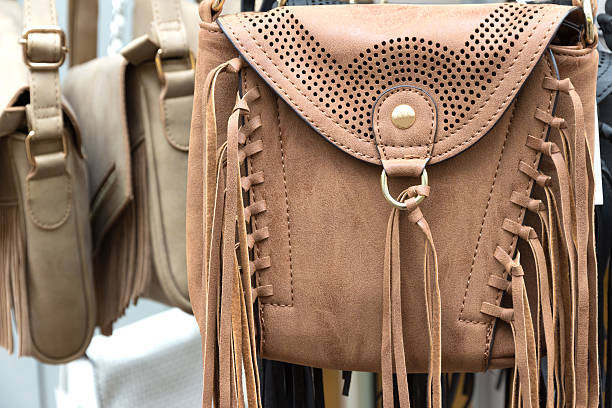
Is Nubuck Leather Good for Bags?
Nubuck leather is a popular material for many products.
Briefcases, travel bags, boots and gloves are popular examples of where this stylish material makes excellent wares.
Nubuck leather can make stylish bags for both everyday use and for travel.
It is strong and durable due to its close-knit build, making it a sturdy and classic choice for a bag that is designed to last a long time.
Their long-lasting and attractive appearance make real leather bags the perfect gift.
Many invest in real leather bags for special birthdays, anniversaries and even promotions for their loved ones, and see them lovingly used for many years, even decades.
Nubuck leather bags make wonderful gifts.
If you’d like to check out our real leather goods, see our leather messengers, backpacks, handbags, briefcases and duffles on this website. Checkout from our website now with free shipping.
Or check out our favorite nubuck leather good, The Man Bag.

FAQ’s
1. What is nubuck leather?
Nubuck leather is a type of leather that has been sanded or buffed on the grain side to create a soft, velvety texture. It is similar to suede but is made from the top grain of the hide, resulting in a finer, more durable material.
2. How is nubuck leather different from suede?
While both nubuck leather and suede have a soft, textured surface, they are made from different parts of the animal skin.
Nubuck leather comes from the top grain of the hide and is sanded to create its texture, while suede comes from the underside of the hide and is softer and more pliable.
3. Is nubuck leather durable?
Yes, nubuck leather is known for its durability and resilience.
The sanding process helps to compact the fibers of the leather, making it more resistant to wear and tear compared to suede.
However, like any leather material, proper care and maintenance are essential to prolong its lifespan.
4. How do I clean nubuck leather?
Cleaning nubuck leather requires gentle care to avoid damaging the delicate texture.
Start by using a nubuck brush or cloth to remove surface dirt and debris.
For stains, use a specialized nubuck cleaner and follow the manufacturer's instructions carefully.
Avoid using water or liquid cleaners, as they can cause damage to the leather.
5. Can nubuck leather be waterproofed?
Note that nubuck is naturally water-resistant. But for waterproofing:
Yes, nubuck leather can be waterproofed to some extent using a waterproofing spray or protector specifically designed for suede and nubuck materials.
However, it's essential to test any waterproofing products on a small, inconspicuous area of the leather first to ensure compatibility and effectiveness.
6. Is nubuck leather suitable for all types of footwear?
Nubuck leather is commonly used in the production of footwear, including boots, shoes, and sandals.
Its durability, softness, and textured appearance make it a popular choice for both casual and dressy footwear styles.
However, it may require more frequent cleaning and maintenance compared to smooth leather options.
7. How can I restore the color of faded nubuck leather?
Faded nubuck leather can be restored using a nubuck color restorer or conditioner.
These products are specially formulated to revive the color and luster of nubuck leather, helping to rejuvenate its appearance.
Be sure to follow the manufacturer's instructions carefully for the best results.
